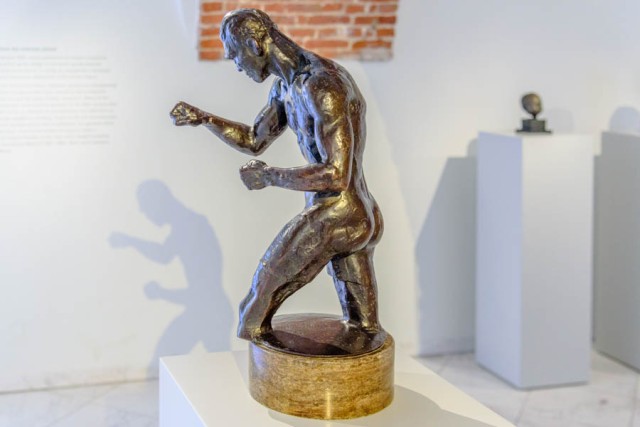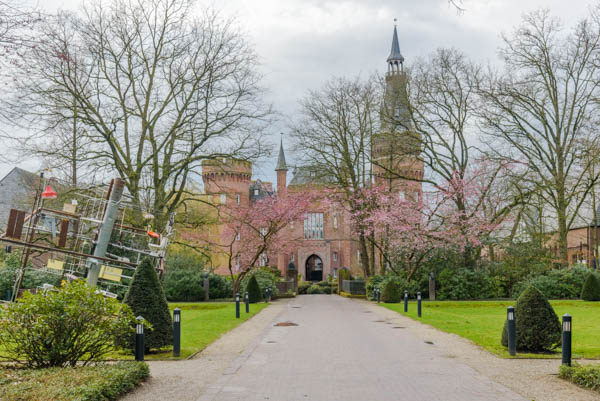
Bronze “Der Boxer Max Schmelling” by Rudolf Belling, 1928.
The divergent fates of sculptor and subject of this work are fascinating. Belling held radical views on the theory of sculpture, and his works were damned as ‘degenerate art’ (entartete Kunst) after the Nazis assumed power in 1933. He fled first to New York in 1935 and then to Istanbul two years later, where he would spend the next three decades. He had a successful academic career in Turkey, and moved back to Germany only as an eighty year-old in 1966.
Schmeling, World Heavyweight Champion from 1930-2, fought two legendary bouts against Joe Lewis. Given that Lewis was not only black, but perhaps the first African American to become a national icon, he represented another form of degeneracy for the Nazi régime and the fights had extraordinary political charge.
The first, in 1936, was not a title fight, and Schemling, although the underdog, had spent time profitably studying film of Lewis’ technique, looking for weaknesses to exploit, and eventually knocked Lewis out the 12th round.
By 1938, however, Lewis was the world champion, and a much better fighter than he had been two years before; he battered Schmeling with a fusillade of blows leading to a first round knockout.
Despite being used as an icon of Aryan manhood, Schmeling was no fan of the Nazis and was deeply loyal to his Jewish fight promoter, Joe Jacobs. When war came, Schmeling was drafted as a paratroop, injured in the Battle of Crete, and after the war had a successful career with Coca Cola. He became close friends with Lewis, with the two making numerous public appearances. Schmeling eventually assisted Lewis financially after the legend was effectively swindled by his manager Mike Jacobs.
There is a deliciousness in the fact that this wonderful capture of Schmeling at the height of his powers was made by an artist later deemed degenerate; bursting with life and disciplined power, it incarnates Belling’s theory that a sculpture should look good from every angle.
In the gallery of Schloß Moyland Castle in Bedburg-Hau, Germany (a much-storied building well worth a visit that may be the subject of a future blog post).






